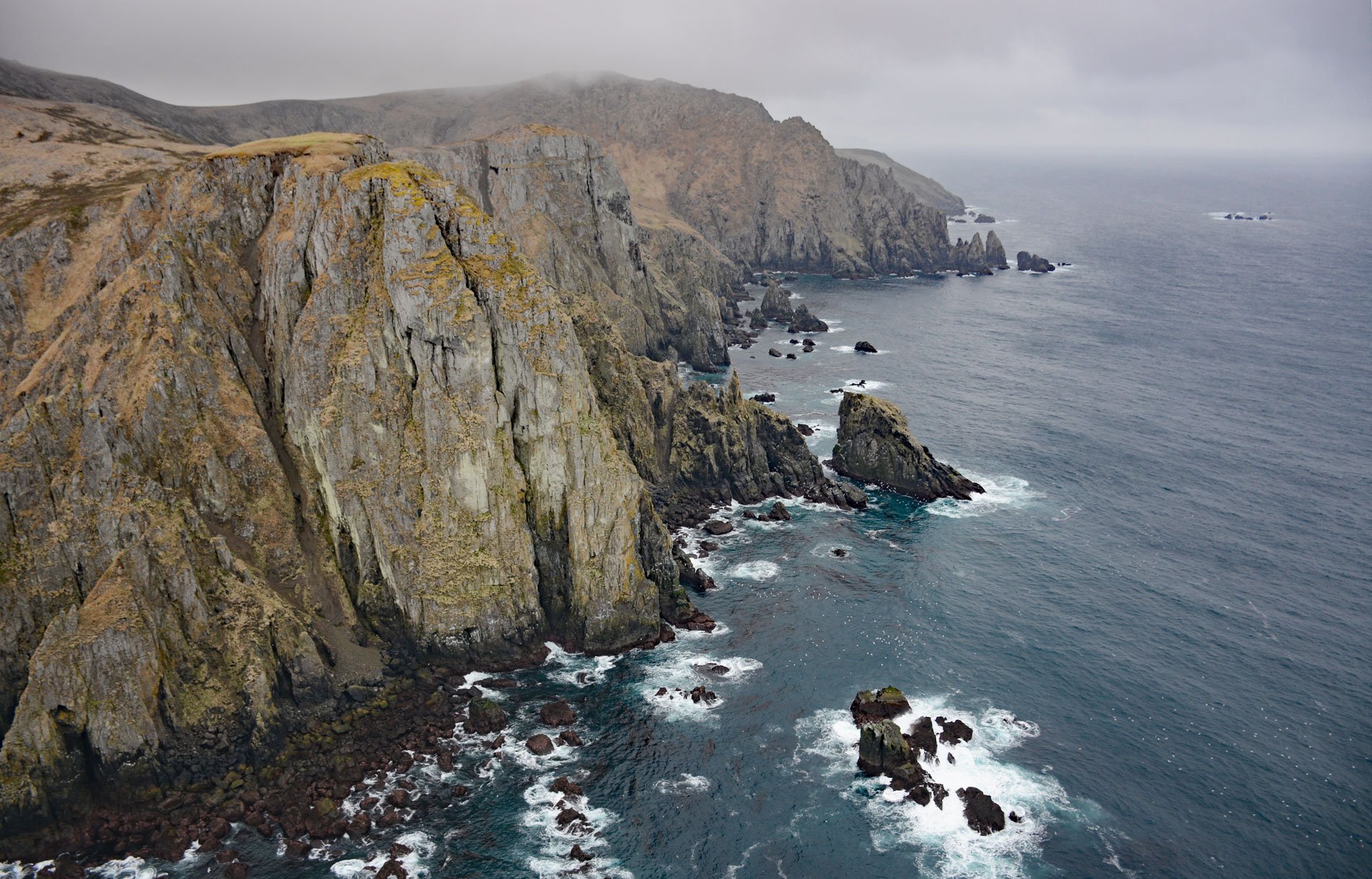The Semidi Islands are a group of rocks, reefs, and islands lying off the coast of the Alaska Peninsula in the Gulf of Alaska, about 92 miles (148 km) east-northeast of Perryville, and 61 miles (98 km) east of Chignik, Alaska. The largest islands of the group are Aghiyuk Island and Chowiet Island that are part of the Alaska Maritime National Wildlife Refuge. The name Aghiyuk is derived from “Achaiak”, the Aleut word for cormorant, a common coastal seabird. The islands rise to an elevation of 846 feet (258 m) and are exposed to high precipitation and storms from the North Pacific Ocean.
Early Russian explorers discovered Arctic foxes living on the Aleutian Islands, and by 1746, they were transplanting foxes to other islands. The blue fox is a color phase of the coastal Arctic fox, with a dark blue pelt in winter and brown fur in summer. To the Russians, foxes were not nearly as important as sea otters and fur seals but were valuable enough to release and fend for themselves. These foxes and their descendants consumed many seabirds and eggs annually. The Russians continued this practice for about 125 years, and during that time, hunters collected hundreds of thousands of fox pelts and shipped them to markets in Russia and China. The number and quality of fox pelts collected in a given year were variable and in order to avoid the unpredictability inherent in wild fur harvesting, several entrepreneurs decided to farm foxes commercially. The first recorded efforts to raise blue foxes after the purchase of Alaska by the United States began in 1885. The Semidi Propagating Company of Kodiak obtained 8 or 10 pairs of blue foxes from the Pribilof Islands and placed them on several islands including Aghiyuk. After a few years of success, there was a decline in the industry, and the island fox farms were abandoned and most or all of the stock of foxes removed. In about 1916, interest in fox fur revived and developed so rapidly that by 1925 almost all the islands in the Gulf of Alaska suitable for the enterprise were occupied by fox farms. The market for blue foxes dropped significantly starting in 1931, and the few farms that survived the Great Depression were abandoned when World War II ended the demand for furs.
In 1932, the Semidi Islands National Wildlife Refuge was formed to protect the 2.4 million birds that nest on the islands. About 370,000 horned puffins nest in the Semidis along with northern fulmars and jaegers, and over a million common murres. Ancient murrelets and parakeet auklets are also found here. The Semidi Islands also include approximately one-quarter million acres of surrounding seabed, providing habitat for sea otters, Steller sea lions, seals, porpoises, and whales. In 1980, the islands were combined with other wilderness areas to form the Alaska Maritime National Wildlife Refuge. Today, the Semidi Islands are uninhabited. Read more here and here. Explore more of Aghiyuk Island and the Semidi Islands here:

